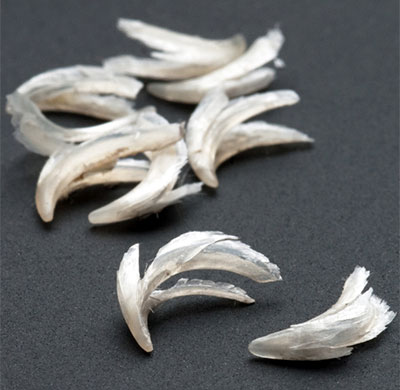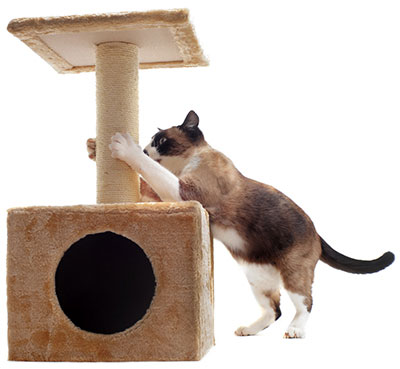Declawing
Scratching is a normal part of cat behavior. Cats scratch to mark territory, stretch their muscles, and shed old skin from their claws. Their claws help a cat to climb to safety, build strength, and help them to fully stretch their bodies. Scratching is not done to purposely damage furniture or belongings. When we choose to have a cat in our life, this is an element of their nature we must adapt to. With just a little training and understanding of their needs, cat claws should pose very little issue.
What Is Declawing?

Some people mistakenly think that declawing is a harmless act that has little effect on a cat. Let's talk about what declawing is to clear up this very big misconception.
Declawing traditionally involves amputating of the last bone of each toe to remove the claw of a cat at the knuckle. If performed on a human being, it would be similar to cutting off each finger from the last knuckle. Sound painful? That is because it is. Not only that, but it is considered both an inhumane and entirely unnecessary act. So much so, that this procedure is banned in countries including:
- The UK (England, Ireland, Scotland, and Wales)
- Australia
- New Zealand
- Brazil
- Denmark
- Norway
- Sweden
- Finland
- Portugal
- Belgium
- Germany
- Austria
- Switzerland
- France
- Spain
- Netherlands
The Humane Society of the US opposes declawing except when medically necessary, such as the removal of cancerous nail bed tumors.
Declawing a cat to simply protect your furniture or because you do not want to train your cat is never a justification for this procedure. Keeping a cat's nails trimmed and training them to use a scratching post will go a long way to eliminating damage to belongings, and are actions that should be taken by every responsible cat owner.
Health Consequences of Declawing
Declawing can cause behavioral problems. Some cats may start biting because they no longer have their claws for defense. It can also cause:
- Pain
- Infection
- Tissue death
- Lameness
- Back pain
- Nerve damage
- Bone spurs
- Regrowth of improperly removed claws
What You Can Do
 Cats can easily be trained to use scratching posts. They are usually around 8 weeks old when they begin scratching, the perfect time to begin introducing them to a scratching post and nail trimming.
Cats can easily be trained to use scratching posts. They are usually around 8 weeks old when they begin scratching, the perfect time to begin introducing them to a scratching post and nail trimming.
- Place a scratching post close to where they will eat and sleep. Include a vertical scratching post at least 2-3 feet high to allow them to stretch to their full height.
- Get your kitty used to having their nails clipped as early as possible by rewarding with lots of praise and treats.
- Offer different materials like carpet, wood, and cardboard. Encourage your cat to use these materials by rubbing them with catnip (a fragrant herb from the mint family that cats go absolutely crazy for!).
- Use a special tape (like Sticky Paws®) on furniture to discourage your cat from scratching.
- Never roughhouse with your kitten or cat using your bare hands. You never want them to think that biting or scratching human skin is okay.
RELATED ARTICLES
- Why pets are getting sicker
- Fleas, ticks, & mosquitoes
- Natural dog grooming
- Pet vaccinations
- Declawing
- Healthy & balanced pet diet
- Home-cooked diet
- Raw food diet for pets
- Home-baked doggy treats
- Bones - nature's toothbrush
- Pet-proofing your home
- Preparing for a new pet!
- Treating common pet injuries
- Pet dental care



